To update the balance in the owner's capital account, accountants close revenue, expense, and drawing accounts at the end of each fiscal year or, occasionally, at the end of each accounting period. For this reason, these types of accounts are called temporary or nominal accounts. Assets, liabilities, and the owner's capital account, in contrast, are called permanent or real accounts because their ending balance in one accounting period is always the starting balance in the subsequent accounting period. When an accountant closes an account, the account balance returns to zero. Starting with zero balances in the temporary accounts each year makes it easier to track revenues, expenses, and withdrawals and to compare them from one year to the next. There are four closing entries, which transfer all temporary account balances to the owner's capital account.
-
Close the income statement accounts with credit balances (normally revenue accounts) to a special temporary account named income summary.
-
Close the income statement accounts with debit balances (normally expense accounts) to the income summary account. After all revenue and expense accounts are closed, the income summary account's balance equals the company's net income or loss for the period.
-
Close income summary to the owner's capital account or, in corporations, to the retained earnings account. The purpose of the income summary account is simply to keep the permanent owner's capital or retained earnings account uncluttered.
-
Close the owner's drawing account to the owner's capital account. In corporations, this entry closes any dividend accounts to the retained earnings account. For purposes of illustration, closing entries for the Greener Landscape Group follow.
Closing entry 1: The lawn cutting revenue account is Mr. Green's only income statement account with a credit balance. Debit this account for an amount equal to the account's balance, and credit income summary for the same amount.
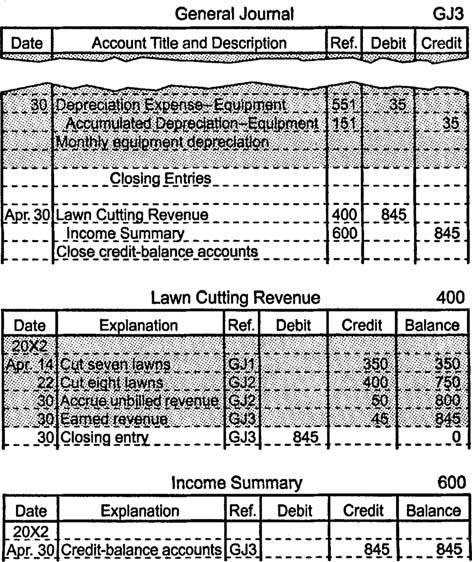
Closing entry 2: Mr. Green has eight income statement accounts with debit balances; they are all expense accounts. Close these accounts by debiting income summary for an amount equal to the combined debit balances of all eight expense accounts and by crediting each expense account for an amount equal to its own debit balance.
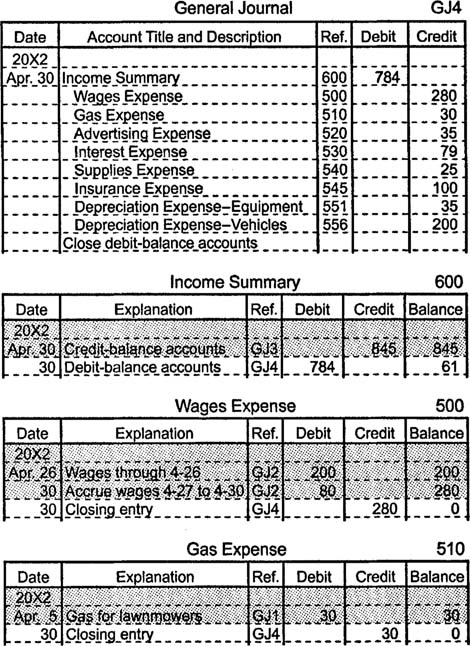
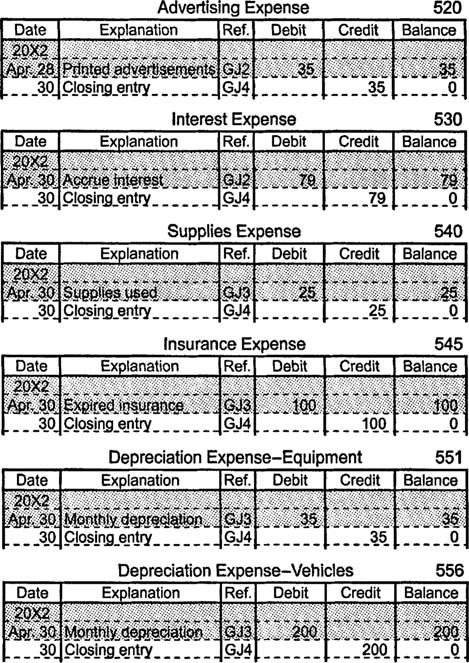
Closing entry 3: The income summary account's $61 credit balance equals the company's net income for the month of April. To close income summary, debit the account for $61 and credit the owner's capital account for the same amount.
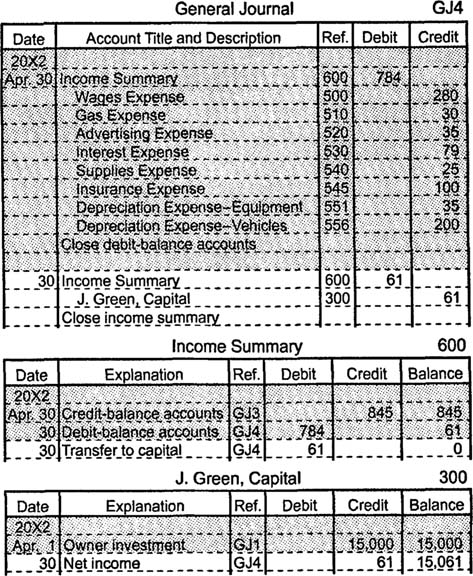
In partnerships, a compound entry transfers each partner's share of net income or loss to their own capital account. In corporations, income summary is closed to the retained earnings account.
Closing entry 4: Mr. Green's drawing account has a $50 debit balance. To close the account, credit it for $50 and debit the owner's capital account for the same amount.
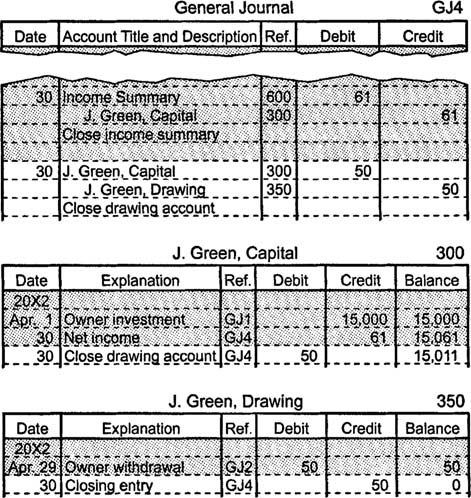
In a partnership, separate entries are made to close each partner's drawing account to his or her own capital account. If a corporation has more than one class of stock and uses dividend accounts to record dividend payments to investors, it usually uses a separate dividend account for each class. If this is the case, the corporation's accounting department makes a compound entry to close each dividend account to the retained earnings account.